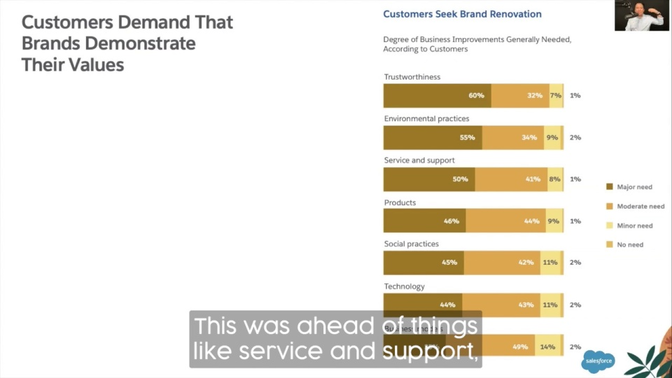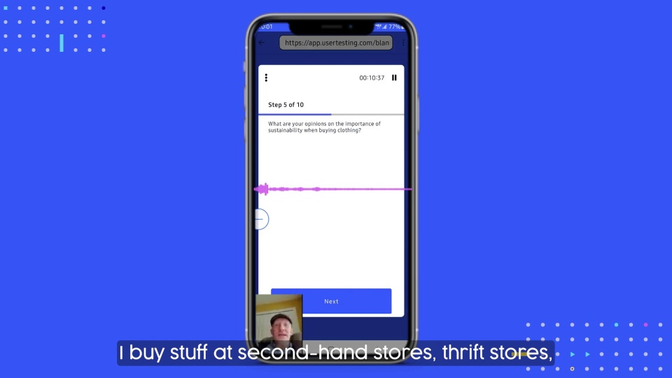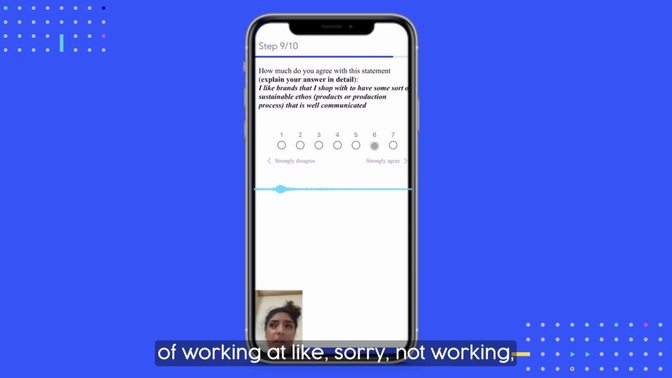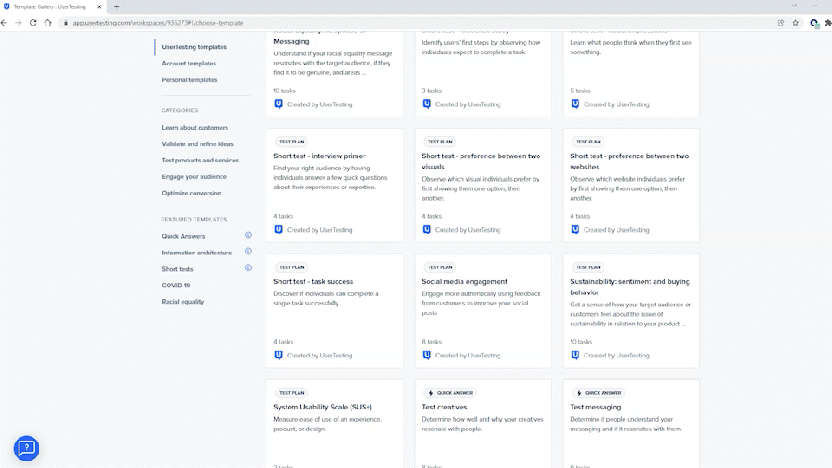
Why organizations shouldn't rush their sustainability efforts

The issue of sustainability is increasingly gaining the attention of governments, businesses, and consumers alike. It’s no longer a niche issue.
Recently, the COP26 conference in Glasgow set ambitious emissions targets for countries to achieve. Without a surefire plan in place, the question is how much of this responsibility will fall to businesses and consumers? How do consumers feel about sustainability and what role do they want companies to play?
While it may be enticing for organizations to jump on the sustainability bandwagon, here are a few considerations:
Be authentic in your support for sustainability or risk losing trust
Before running to market with a new sustainability campaign or product launch, consider its future impact or, worse, non-impact on how your customers see you.
One thing I learned at UserTesting’s annual customer experience (CX) event is that the world is suffering a trust crisis. In the video below, Brian Solis, Digital Anthropologist and Futurist at Salesforce, explains why the two business improvements that consumers most want to see from businesses are trustworthiness and the role companies play in society.

While this gives companies the opportunity to step up and define their values, it’s not without risk. According to Forrester, just 34% of EU customers trust companies when they say they will commit to reducing climate change. That’s why 25% more EU businesses will appoint chief sustainability officers or leads, especially in the financial services and retail industries. What you don’t want to do is set up an unrealistic expectation or cross an unknown line in the sand for your customers.
For executives, product managers, and marketers who will bring to life the company’s vision of sustainability, the very first step should involve checking in with your customers, users, target audiences, and even your own employees.
Start by building a better understanding of your customers
Before sinking time and money into a new concept or idea, get grounded with feedback from your customers, users, prospects, and/or target audience.
In this Forrester webinar, experts bring up important considerations for brands that are looking to leverage sustainability:
- What are your customer’s views and emotions toward sustainability?
- What barriers stop them from shopping sustainably?
- What tradeoff are they willing to make to buy sustainable products?
You’ll want to consider these questions before pumping out new sustainability products and messaging. While many consumers may want to act in a sustainable way, that doesn’t mean they’re well-equipped to make sustainable choices.
Perhaps your customers are not willing to sacrifice cost, quality, or convenience, yet they know sustainability is important to them.
While this should be your first step when building a sustainability response, it should be your first step before any campaign or project. Guessing or assuming what your audience wants or failing to consult them at all is a dangerous move.
In today’s markets, customer sentiment and behavior can change rapidly without notice so it’s important to check the pulse of your audience before, during, and after a release.
Optimize your customer experience (CX) to address sustainability
To give you an idea of how quick and easy it is to get feedback, I ran some sample tests. My goal was to get qualitative feedback on sustainability views when shopping for clothing. I ran the tests with the UserTesting Participant Network. Here are some of the responses we got.
Sustainability behaviors

Sustainability beliefs

Final thought: drive more business decisions with rapid customer insight
While it remains to be seen what influence sustainability will have, consumer behavior will continue to shift rapidly. It’s more important than ever before to listen to your customers and users. Luckily, the process is quick and easy.
To get the video results above, I used the sustainability test template in UserTesting’s template gallery to gather fast feedback. It took me less than an hour to get the video responses and to create a highlight reel that I could send to key stakeholders to guide their decision-making. This means that fewer business decisions are made without checking the pulse of customers, users, and target audiences first.

If my stakeholders want to know more, I could run more quick tests to drill down into something specific, or I could conduct an in-depth study. I could even moderate a Live Conversation with participants or my own customers in real time.
Get started with sustainability testing through the Human Insight Platform
The Human Insight Platform is a video-first solution where you can see and hear the experiences of real people as they engage with your products, designs, apps, processes, concepts, brands, in-store experiences, and more.
Sustainability testing for designers
In the webinar mentioned above, Forrester puts an emphasis on the importance of making sure any sustainability effort results in an improved CX for users. One example they give of a simple change that designers can make is creating a button in the shopping navigation to “show only sustainable options.” As always, test at every stage of the design process.
Sustainability testing for marketers
If you’re curious whether it’s worth creating a marketing campaign on sustainability, find out for yourself. Getting feedback from your target audience helps you to create an emotional connection with them. Instead of relying on hunches, discover first-hand how your audience feels about sustainability versus their buying habits.
Sustainability testing for product managers
Ensure that your product or offer meets the expectations of your customers or users. You may be surprised to discover what elements of sustainability really matter to them. Use fast feedback loops to keep development on the right track. These feedback loops need not be overwhelming. Whatever processes you follow—be it double diamond, agile, design thinking, or something else—fast feedback loops are simply checkpoints where you check your concepts and ideas or progress with your customers or users.
Sustainability testing for HR and people teams
We can’t neglect the importance of the opinions of our teams and staff. What are their views on sustainability and how important is it to their own career goals? Find out how to improve your employee experience or crowdsource some ideas from your teams on how to introduce sustainability to your organisation.

Watch a demo
See how easy it is to get fast feedback on a website, prototype, design, or more in this demo.





